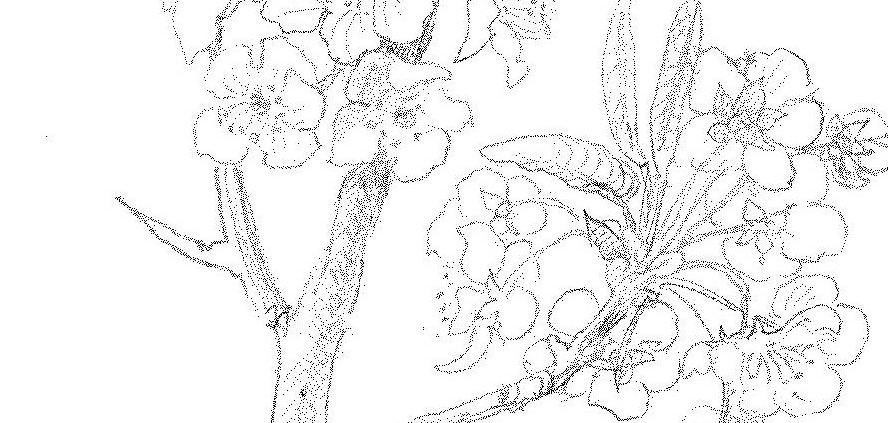The Bradford Pear Story
Story and illustration by Doug Pifer
It sounded like springtime in December. Three dozen robins were singing and scolding on Christmas morning. They had gathered to feed on the fruits of Bradford pear, an ornamental tree that was the darling of landscapers thirty years ago and is now black listed by many gardeners and nature lovers.
Bradford Pear, Pyrus Calleryana, has an interesting history that began early in the 1950s when pear orchards in the Pacific Northwest were decimated by fire blight, a disease that kills fruit trees. Agricultural researchers discovered that the Callery pear, a thorny wild tree native to China, had rootstocks highly resistant to the disease. They grew imported Callery pear trees in nurseries where branches from choice pear varieties were grafted onto their roots. This eventually saved the commercial pear business from being wiped out by fire blight.
Meanwhile, one agricultural nursery grew a Callery pear tree that was sterile, had a beautiful shape, profuse flowers, and no thorns. This cultivar was named “Bradford” after its discoverer. Bradford pear became the ideal landscaping tree in the 1980s. It had a lovely, symmetrical shape. It thrived in a variety of climates and soils. It even tolerated the polluted air and compacted soil next to city streets, shopping centers, business parks and parking lots. Its shiny green leaves turned from yellow to orange to deep red and stayed on the tree until late fall. Its white blossoms made a spectacular show in early spring.
As they matured, Bradford pear trees became problematic. They were short lived. Their narrowly forking branches and soft wood were prone to breakage. A windy spell would
frequently tear a large Bradford pear tree apart. The clouds of white blossoms, while stunning, smelled bad to some people. While the original Bradford variety was sterile, most trees you see now have been cross pollinated and bear small, pinkish brown “pears.” Most of these trees also have thorns. If you park your car under one of the fruiting trees after a night of heavy frost, you may return later to find your windshield smeared with their thawing, fallen fruit. Robins, starlings, and other fruit-eating birds gorge on these little pears during late fall. The birds, in turn, disburse the seeds.
Now Bradford, or rather Callery, pear trees grow everywhere.
Localities in several states have banned Bradford pear trees. People are urged to dig up and destroy Bradford pear trees on their property. Disposing of them isn’t easy. After a tree is cut, its roots must be destroyed before they send up new shoots everywhere. A tractor brush hogging a field can get thorn-slashed tires. Putting cut branches though a wood-chipper creates mulch which may contain pear seeds that sprout in the spring.
A wild Chinese pear tree once saved the American pear industry and then became a favorite landscaping tree. Now reverted to its Callery roots, it has become what many would call a scourge.










